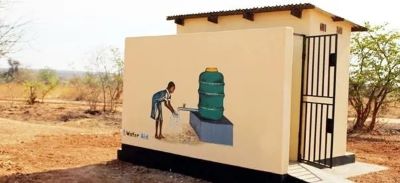Context-
India's journey towards achieving sanitation goals in rural areas has seen significant policy shifts and implementation challenges. Despite notable progress, the sustainability and inclusivity of sanitation initiatives remain key areas of concern.
Sanitation System-
Ancient civilizations dating back to around 4000 BC (Indus Valley Civilization) initiated rudimentary sanitation practices, while the modern sanitation system, as we recognize it today, emerged in London during the 1800s.
There are various types of sanitation systems in use:
On-site Sanitation Systems (OSS): OSS includes methods like twin pits, septic tanks, bio-digester toilets, bio-tanks, and urine diversion dry toilets. These systems are commonly found in rural or spacious urban areas. They passively treat used water containing fecal sludge or septage, adapting to different spatial constraints.
Urban Sewer Systems: In densely populated urban areas with limited space, underground networks of pipes, known as sewers, collect and convey used water to treatment facilities. These interconnected pipes transport water from toilets, bathrooms, and kitchens to treatment plants either by gravity or with the help of pumps. Sewers have access points for maintenance and to remove blockages.
● Fecal Sludge Treatment Plants (FSTPs): FSTPs operate using mechanical (such as screw presses) or gravity-based systems (like sand drying beds) to manage fecal sludge. These facilities focus on containment, conveyance, and treatment, often referred to as fecal sludge management (FSM).
● Sewage Treatment Plants (STPs): STPs employ physical, biological, and chemical processes to eliminate pollutants from used water. The primary stage separates solids, followed by purification where microorganisms digest solids, and eventual disinfection..
Evolution of Sanitation Policies
India's journey towards improving sanitation can be traced back to the inception of the Central Rural Sanitation Programme (CRSP) in 1986. Subsequent initiatives such as the Total Sanitation Campaign and the Swachh Bharat Mission-Grameen (SBM-G) marked pivotal shifts in policy approaches, transitioning from high subsidy regimes to demand-driven models. The SBM-G, launched in 2014, aimed to achieve Open Defecation Free (ODF) status by October 2019, reflecting a paradigmatic shift in India's sanitation agenda.
Sanitation Coverage and Behavioural Patterns
Government data suggests a remarkable increase in sanitation coverage, from 39% in 2014 to 100% in 2019. However, the mere construction of toilets does not guarantee their effective utilization. Surveys highlight persistent challenges, including the non-usage of toilets due to structural defects, hygiene concerns, and socio-cultural factors. Despite significant investments, behavioral change remains a critical yet elusive component of India's sanitation agenda.
Disparities in Sanitation Access and Usage
Disparities in sanitation access and usage persist across regions and socio-economic groups. While certain states exhibit high levels of toilet access, non-usage rates remain alarmingly high, particularly among marginalized communities. Economic conditions, education levels, and household size emerge as key determinants of toilet usage, underscoring the intricate interplay between socioeconomic factors and sanitation behaviours.
Challenges of Phase II Implementation
The launch of Phase II of the SBM-G underscores the government's commitment to sustaining sanitation gains and addressing residual challenges. However, gaps in coverage and usage necessitate a comprehensive reassessment of policy priorities and implementation strategies. The imperative to cover left-out households and address structural deficiencies underscores the imperative for targeted interventions and community engagement.
Role of Social Norms and Networks
Social norms and networks exert a profound influence on sanitation behaviours, shaping attitudes toward toilet construction and usage. The intricate dynamics of caste hierarchies and social networks underscore the need for culturally sensitive and context-specific interventions. Phase II of the SBM-G must prioritize social engineering and community mobilization to foster meaningful behavioural change.
Lack of Synergy in Programme Implementation
Despite substantial investments and concerted efforts, India's sanitation landscape remains fragmented, characterized by disjointed programme implementation and limited coordination. The lack of synergy between sanitation initiatives and broader development agendas undermines the effectiveness of interventions and compromises long-term sustainability. A holistic approach that integrates sanitation with housing, water supply, and other basic services is imperative for achieving meaningful outcomes.
Pathways to Sustainable Sanitation
Achieving sustainable sanitation outcomes necessitates a multi-dimensional approach that transcends infrastructure provision to address behavioural, socio-cultural, and institutional barriers. Policy interventions must prioritize community participation, social mobilization, and capacity building to foster a culture of hygiene and sanitation. Strengthening coordination mechanisms and promoting convergence across development sectors is essential for optimizing resource allocation and enhancing programme effectiveness.
Conclusion
In conclusion, India's rural sanitation journey is marked by progress, challenges, and opportunities. While significant strides have been made in expanding sanitation coverage, the path towards inclusive and sustainable sanitation remains complex and multifaceted.
By addressing disparities in access, utilization, and behavioural change, India can realize its vision of universal access to safe and dignified sanitation. Embracing a holistic approach that integrates infrastructure development with community engagement, social mobilization, and policy coordination is essential for achieving meaningful and lasting outcomes.
As India navigates the next phase of its sanitation agenda, a concerted effort to prioritize equity, inclusivity, and sustainability is paramount. By harnessing the collective efforts of government, civil society, and communities, India can build resilient sanitation systems that promote public health, environmental sustainability, and social well-being.
|
Probable Questions for UPSC Mains Exam-
|
Source- The Hindu







